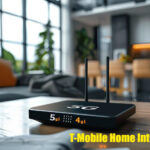In the world of electronics, the logic board is often referred to as the “brain” of a device, serving as the central hub that coordinates and manages its various components and functions. Whether it’s a smartphone, computer, or gaming console, the logic board plays a crucial role in ensuring that the device operates smoothly and efficiently. In this article, we’ll take a closer look at what exactly a logic board is, how it works, and why it’s essential for the functionality of modern electronics.
What is a Logic Board?
The logic board, also known as a motherboard or mainboard, is a printed circuit board (PCB) that houses the essential components of an electronic device. It serves as the primary interface between the device’s hardware components, such as the processor, memory, storage, and peripherals, facilitating communication and data exchange among them.
Key Components of a Logic Board
1. Processor (CPU)
The processor, or central processing unit (CPU), is the “brain” of the device, responsible for executing instructions and performing calculations. It is mounted directly onto the logicboard and interacts with other components via the motherboard’s circuitry.
2. Memory (RAM)
Random access memory (RAM) stores data temporarily while the device is in use, allowing for quick access and retrieval by the CPU. The amount and type of RAM installed on the logicboard significantly impact the device’s performance and multitasking capabilities.
3. Storage (e.g., SSD or HDD)
Storage devices, such as solid-state drives (SSDs) or hard disk drives (HDDs), store the device’s operating system, applications, and user data. The logicboard provides interfaces for connecting these storage devices and manages data transfer between them and the CPU.
4. Peripheral Interfaces
The logic board features various interfaces for connecting peripherals, such as USB ports, HDMI ports, audio jacks, and networking ports. These interfaces allow users to connect external devices, such as keyboards, mice, monitors, and network adapters, to the device.
5. Power Management
Power management circuits on the logicboard regulate and distribute electrical power to the device’s components, ensuring stable operation and preventing damage from power fluctuations or surges.
How Does a Logic Board Work?
The logicboard works by coordinating the flow of data and instructions between the device’s hardware components. When the device is powered on, the CPU fetches instructions from the device’s storage and executes them, directing the flow of data between the various components via the logic board’s circuitry. As the CPU processes instructions, it communicates with the memory, storage, and peripherals as needed, allowing the device to perform its intended functions.
Importance of the Logic Board
The logicboard is essential for the functionality of modern electronic devices for several reasons:
- Integration: The logicboard integrates and connects the device’s hardware components, allowing them to work together seamlessly.
- Control: The logicboard controls and manages the flow of data and instructions between the device’s components, ensuring efficient operation.
- Expansion: The logicboard provides expansion options, allowing users to upgrade or expand the device’s capabilities by adding additional components or peripherals.
- Reliability: A well-designed and properly functioning logicboard is crucial for the reliability and stability of the device, minimizing the risk of malfunctions or hardware failures.
Conclusion
The logic board is the unsung hero of modern electronic devices, serving as the central hub that orchestrates the interactions between their various components. From smartphones and computers to gaming consoles and smart home devices, the logicboard plays a crucial role in ensuring that these devices operate smoothly and efficiently. Understanding the function and importance of the logic board provides valuable insight into the inner workings of the electronic devices we rely on every day.
FAQs
- What is a logic board?
- A logic board, also known as a motherboard or mainboard, is a printed circuit board (PCB) that houses the essential components of an electronic device. It serves as the central hub that coordinates and manages the device’s various functions and components.
- What components are found on a logic board?
- Key components found on a logic board include the processor (CPU), memory (RAM), storage (e.g., SSD or HDD), peripheral interfaces (e.g., USB ports, HDMI ports), and power management circuits.
- What is the function of a logicboard?
- The logic board performs several functions, including integrating and connecting the device’s hardware components, controlling the flow of data and instructions between components, providing expansion options for upgrading or expanding the device’s capabilities, and ensuring the reliability and stability of the device.
- How does a logicboard work?
- A logic board works by coordinating the flow of data and instructions between the device’s hardware components.
- What are some common issues with logic boards?
- Common issues with logic boards include hardware failures (e.g., due to overheating or electrical damage), compatibility issues with components or peripherals, and software-related issues (e.g., firmware updates or driver conflicts).
- Are logic boards standardized across devices?
- While there are some common standards and form factors for logic boards (e.g., ATX, Mini-ITX), the specific design and layout of logic boards vary depending on the type of device and manufacturer.
- How can I troubleshoot logicboard issues?
- Troubleshooting logic board issues typically involves diagnosing hardware and software problems, performing tests and diagnostics, and consulting technical support or repair professionals for assistance.












2 thoughts on “Logic Board: The Brain Behind Your Devices”